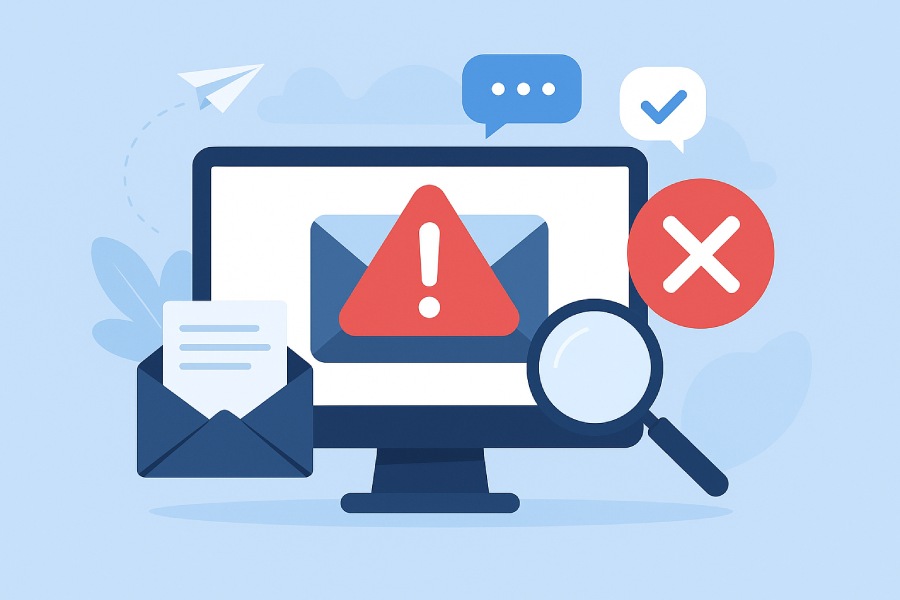Using An Email Spam Checker Website To Write Better Email Messages
Using an email spam checker website helps you craft messages that avoid common spam triggers and reach your audience’s inbox. These tools analyze your subject lines, content, and formatting for potential red flags. They also provide actionable feedback to improve deliverability and credibility. By testing emails before sending, you can ensure compliance with spam filters. Ultimately, spam checkers help enhance engagement and protect your sender reputation.
Understanding Email Spam: Definition and Impact
Email spam refers to unsolicited, often irrelevant or deceptive email messages sent in bulk to a large number of recipients. These unwanted communications can range from promotional advertisements and phishing attempts to malware delivery. The pervasive nature of spam not only clutters inboxes but severely impacts email deliverability, harming an organization’s email reputation and reducing the efficacy of legitimate campaigns.
The impact of spam extends beyond user annoyance; it escalates security threats by embedding malware or phishing links designed to compromise personal information. This is where advanced spam detection techniques, coupled with robust email filtering and anti-spam software, become essential.
Technologies like Bayesian spam filtering, Heuristic spam detection, and machine learning spam filters have evolved to counter increasingly sophisticated spam and phishing schemes effectively. These systems are often augmented by anti-phishing tools, malware scanning, and email virus scanners to bolster overall email security.
Industry-leading providers such as Proofpoint, Barracuda Networks, Mimecast, Cisco IronPort, and SpamTitan offer comprehensive email security solutions that integrate multiple layers of protection to reduce spam volume and prevent threats.
Organizations relying on popular email client filtering mechanisms supported by services like Google Postmaster Tools and Microsoft Exchange Online Protection continually monitor their spam metrics, such as spam complaint analysis and spam report feedback loops, to keep their email lists hygienic and maintain high delivery rates.
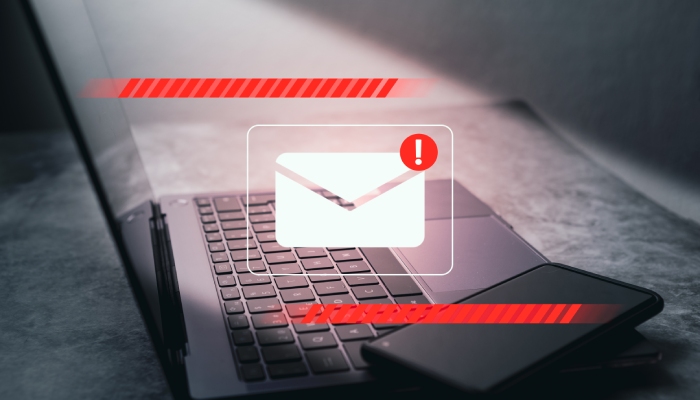
What Is an Email Spam Checker Website?
An email spam checker website is an online platform designed to analyze email messages against a variety of spam detection criteria. It performs a real-time evaluation of your email’s attributes by simulating how spam filters and anti-spam gateways scrutinize each message to determine its likelihood of landing in the spam folder.
These tools function as advanced junk mail checkers, harnessing a combination of content-based filtering, rule-based filtering, and email header analysis techniques. Websites like MXToolbox, SpamCop, and services affiliated with Spamhaus provide access to vital diagnostics including spam blacklist lookup, DNSBL lookups, and spam score calculations.
This helps senders gain insights into their email’s IP reputation, email authentication status through SPF record checker, DKIM validation, and DMARC analysis—crucial components influencing an email’s credibility.
By offering detailed feedback on each element—ranging from email header inconsistencies to suspicious content patterns—the spam checker allows marketers, IT professionals, and everyday users to optimize their messages for improved email deliverability and avoid the pitfalls commonly associated with spam triggers.
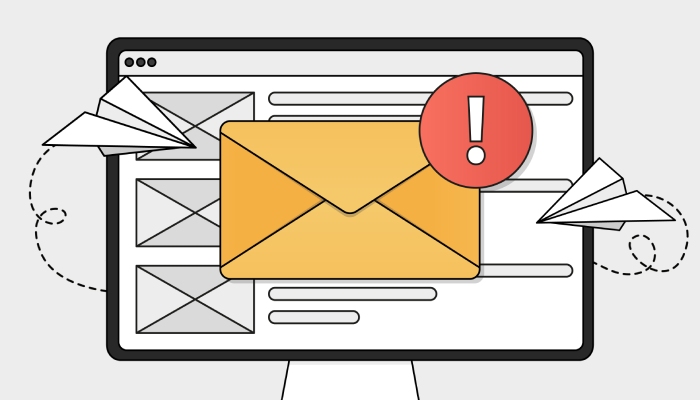
How Email Spam Checkers Analyze Your Messages
Email spam checker websites employ multifaceted techniques combining sophisticated spam detection algorithms that mimic enterprise anti-spam software behavior. Here’s how the analysis process usually unfolds:
1. Email Content Analysis
The content is scrutinized for spam indicators such as excessive promotional language, hidden links, phishing keywords, and suspicious attachments. This includes email scam detection by leveraging machine learning spam filters trained to identify common phishing patterns and deceptive offers. Content is evaluated against preset spam score thresholds, often informed by frameworks like SpamAssassin, to quantify potential spamminess.
2. Email Header Spam Check
Headers provide routing and authentication information essential for verifying legitimacy. The spam checker performs comprehensive email header analysis, including an SMTP diagnostic to ensure proper server configurations and relay authenticity (SMTP relay checking). Additionally, IP addresses are checked against multiple blacklists via spam blacklist lookup and spamhaus, a critical step in validating an email’s IP reputation and identifying whether it has been flagged by entities monitoring graylist checking and IP blacklist monitoring.
3. Email Authentication Verification
Strong email authentication protocols form the backbone of modern email security. The spam checker confirms the presence and correctness of SPF (Sender Policy Framework) records, runs DKIM (DomainKeys Identified Mail) validation, and conducts DMARC (Domain-based Message Authentication, Reporting & Conformance) analysis. Ensuring these protocols are correctly implemented prevents your emails from being spoofed or classified incorrectly, which contributes to improving overall domain email reputation.
4. Bulk Email Analysis and List Hygiene
For marketers sending campaigns through platforms like MailChimp, SendGrid, Mailgun, and SparkPost, bulk email testing capabilities are indispensable. Spam checkers analyze multiple emails simultaneously (bulk spam test), inspecting metrics like spam complaint rates, spam feedback loops, and email bounce handling. Maintaining good email list hygiene prevents spam traps and reduces the risk of landing on blacklists.
5. Malware and Phishing Detection
Modern spam checkers include integrated anti-phishing tools and email virus scanners to detect embedded malware or malicious links. These features complement the broader anti-spam gateway defenses offered by solutions such as Symantec Email Security, McAfee Email Protection, Trend Micro Email Security, and Fortinet FortiMail.
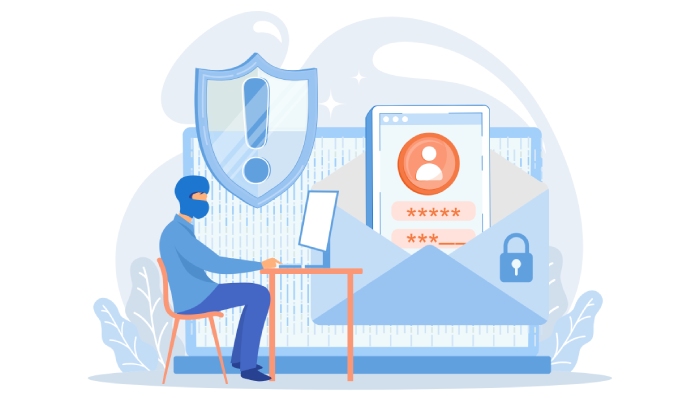
6. Spam Filter Tuning Insights
By simulating various spam filter tuning environments and email client filtering settings, spam checkers provide recommendations to improve compliance with common filters, including enterprise-level systems from providers like GFI MailEssentials, Cloudmark, and Commtouch. These recommendations support optimized message structure, helping avoid triggers common to both content-based filtering and rule-based filtering systems.
Key Factors That Cause Emails to Land in Spam
Sending good email content is only part of the equation; many technical and behavioral factors influence whether an email reaches the inbox or the spam folder. Here are the pivotal reasons why emails are often flagged:
- Poor Email Authentication: Failure to properly configure SPF, DKIM, or DMARC records sets off alarms in spam filters. Without these protocols, it’s difficult for receiving servers to verify an email’s origin, increasing the chance of your message being labeled suspicious or spoofed.
- Bad IP and Domain Reputation: An IP address with a history of sending spam or being listed on blacklists such as Spamhaus, or flagged during DNSBL lookup, will likely face deliverability challenges. Continuous monitoring via IP blacklist monitoring and diagnostic tools like MXToolbox helps maintain a clean sending environment.
- Spammy Content and Links: Emails loaded with all-uppercase words, excessive exclamation points, misleading subject lines, or URLs directed to low-reputation domains trigger both Bayesian spam filtering and Heuristic spam detection mechanisms. Content analysis APIs and services employed by SpamCop and Return Path routinely identify and penalize such content patterns.
- Inclusion of Spam Traps in Mailing Lists: Spam trap detection is critical; these special email addresses are designed exclusively to catch spammers. They damage the sender’s email reputation and can result in blacklisting or delivery throttling by services such as SpamTitan and Trustwave.
- High Bounce Rates and Spam Complaints: Poor email list hygiene and ineffective email bounce handling lead to high bounce rates, signaling to spam filters that the sender may be negligent or malicious. Similarly, frequent spam complaints registered through spam reporting tools feed into the global spam feedback loops, damaging sender credibility.
- Misconfigured SMTP Servers or Relay Issues: Incorrect SMTP configurations or unauthorized relays raise red flags, detected during SMTP diagnostic and SMTP relay checking by spam checker tools and security platforms like Talos Intelligence Group and Zscaler Email Security.
- Lack of Engagement and Historical Data: Some sophisticated filters analyze recipient engagement as part of their spam filter tuning logic. Low open rates, deletions without reading, or frequent marking as junk suggest poor email client filtering outcomes and can suppress future inbox delivery.
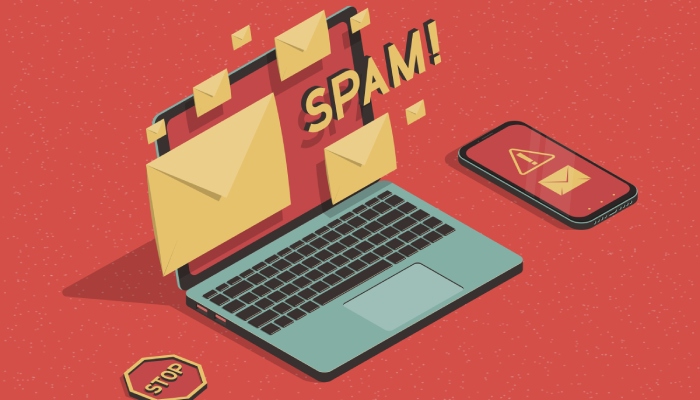
Benefits of Using an Email Spam Checker Before Sending Emails
Utilizing an email spam checker before dispatching your emails offers profound benefits that enhance overall email deliverability and protect sender reputation. Modern anti-spam software, such as SpamAssassin or SpamTitan, leverages sophisticated spam detection algorithms incorporating heuristic spam detection, Bayesian spam filtering, and machine learning spam filters to identify potential spam triggers within email content.
This preemptive step allows marketers and IT teams to mitigate the risk of emails landing in junk mail folders or triggering spam filter tuning by major providers like Microsoft Exchange Online Protection, Mimecast, or Proofpoint.
One key benefit is the ability to perform comprehensive bulk email analysis to assess the spam score of campaigns. Many spam checkers involve spam blacklist lookup integrated with renowned blacklist services such as Spamhaus, allowing senders to verify IP reputation and authenticate SPF record checker, DKIM validation, and DMARC analysis settings. Correct email authentication prevents critical downgrades in email reputation, ensuring compliance with stringent email security policies and anti-phishing tools.
Furthermore, spam checkers often include email header analysis and SMTP diagnostic capabilities to identify potential configuration issues or anomalies reflecting poor email client filtering or SMTP relay failures. This reduces risks linked to email bounce handling and spam feedback loop implications.
Employing an email spam checker supports list hygiene management by detecting spam traps, reducing spam complaint analysis rates, and improving the sender’s overall email deliverability. This proactive approach to spam folder management ultimately enhances brand credibility in recipients’ inboxes.

Step-by-Step Guide to Using an Email Spam Checker Website
- Choose a Reputable Spam Checker Tool: Select from trusted services such as MXToolbox, SpamCop, or specialized bulk spam test platforms provided by SendGrid, Mailgun, or SparkPost. Many anti-spam gateways also embed junk mail checker functions to streamline the process.
- Input Your Email Content: Paste the full email body, including subject line and headers if possible, into the checker. Some platforms allow uploading raw email files for deeper email content analysis, including malware scanning and email virus scanner functions.
- Run SPF, DKIM, and DMARC Validation: Use integrated SPF record checker, DKIM validation, and DMARC analysis tools to ensure your email authentication parameters are correct. This safeguards IP reputation and complies with anti-phishing policies.
- Perform Spam Blacklist Check: The spam blacklist lookup queries multiple DNSBL lookup services, including Spamhaus and Talos Intelligence Group databases, to confirm that the sender IP or domain is not listed on any blacklists. IP blacklist monitoring is critical for maintaining high email deliverability.
- Analyze Spam Score and Heuristic Results: Review the spam score generated by the spam detection algorithm. This score indicates the likelihood that email filtering engines, such as those used by Barracuda Networks, Symantec Email Security, or Trend Micro Email Security, will block your message.
- Review SMTP Diagnostics and Header Spam Check: Examine results from SMTP relay checking and email header spam check to identify anomalies or spoofing characteristics that could trigger spam folder placement.
- Implement Recommendations: Adjust your email content and technical settings based on the diagnostic feedback, focusing on issues flagged during content-based filtering and rule-based filtering phases.
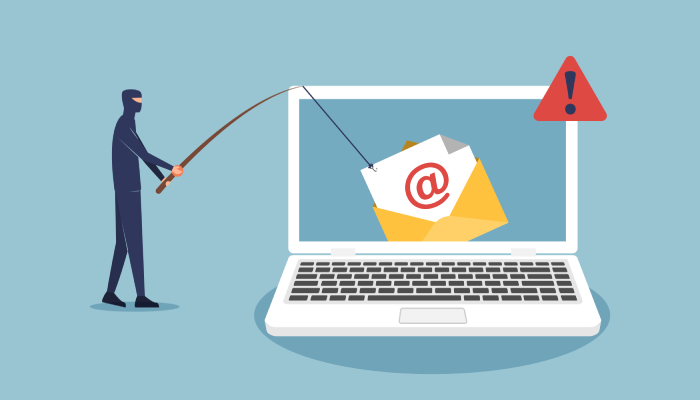
Interpreting Spam Checker Results: Common Metrics and Scores
When interpreting spam checker results, it is essential to understand several core metrics that influence email filtering outcomes:
- Spam Score / spam score threshold: This numerical value, commonly ranging from 0 to 10 or 0 to 100, quantifies the spam likelihood. Emails surpassing your threshold risk being directed into junk mail folders by email client filtering systems like Google Postmaster Tools or Microsoft Exchange Online Protection.
- Blacklist Status: A positive entry in a spam blacklist lookup such as Spamhaus, SpamCop, or Talos Intelligence Group indicates compromised IP reputation and can incur delivery failures or increased spam filtering.
- SPF, DKIM, DMARC Results: Failure in any authentication check undermines email reputation and is a common cause of emails being flagged during anti-spam gateway processing phases.
- Heuristic and Bayesian Analysis: These machine learning spam filters evaluate email content and structure; for instance, Bayesian spam filtering uses historical spam data to identify suspicious patterns.
- Spam Complaint Analysis: If available, this metric reflects recipient feedback gathered from spam reporting tools and spam feedback loops, impacting future email deliverability.
- Malware Scan and Phishing Detection: The presence of malware signatures or suspicious phishing elements will significantly raise spam scores or trigger quarantine by advanced email virus scanners such as Cyren or Vade Secure.
Improving Email Subject Lines Based on Spam Checker Feedback
The subject line is a critical trigger in spam filters. Spam detection algorithms often target subject content for spammy keywords, excessive punctuation, or misleading claims that mimic common email scams. Anti-spam software and junk mail checkers highlight words and patterns that negatively impact your spam score.
To improve subject lines based on spam checker feedback:
- Avoid Trigger Words: Terms like “Free,” “Urgent,” “Act Now,” or excessive use of exclamation points often activate rule-based filtering.
- Aim for Personalization: Incorporate personalization tags compatible with tools like MailChimp or Mailgun to reduce suspicion flagged by machine learning spam filters.
- Keep It Concise and Clear: Spam filters appreciate straightforward language without clutter or excessive symbols.
- Test Variations: Use bulk spam tests on multiple subject lines to identify the versions best accepted by anti-phishing tools and email client filtering across platforms.
Crafting Body Content That Avoids Spam Triggers
Effective email content adheres to principles guiding content-based filtering that both minimizes the spam score and maximizes deliverability:
Balanced Text-to-Image Ratio:
Overuse of images or embedding suspicious links activates spam detection heuristics, often caught during email header analysis or sandbox malware scanning by services like Fortinet FortiMail.
Proper Email Authentication and List Hygiene:
Using verified lists and avoiding spam traps detected during bulk email analysis prevent negative spam complaint analysis and spur better email reputation.

Clear Unsubscribe and Contact Information:
Legitimate unsubscribe options comply with regulations and reduce spam complaints. This is a critical measure identified in spam statistics monitored by anti-spam gateways such as Clearswift or GFI MailEssentials.
Avoid Excessive Formatting and Promotional Language:
Flashy fonts, multiple colors, or aggressive sales pitches are flagged by Bayesian spam filtering and rule-based filters used by platforms like Cisco IronPort.
Include Relevant and Engaging Content:
Providing valuable, relevant offers helps maintain a positive email reputation and improves engagement metrics, influencing spam folder management positively.
Regular Spam Filter Tuning:
Analyze spam feedback loops and spam reporting tools regularly to adjust templates and messaging strategies, ensuring compliance with evolving heuristic spam detection techniques.
By focusing on these elements, marketers can significantly reduce the likelihood of triggering spam filters managed by industry leaders such as Zscaler Email Security, Trend Micro Email Security, Sophos Email, or Nureply, thereby bolstering successful email deliverability.
Importance of Personalization and Its Effect on Spam Filters
Personalization plays a pivotal role in enhancing email deliverability by reducing the likelihood that messages will be flagged by spam detection systems. Anti-spam software, such as SpamAssassin and Barracuda Networks’ solutions, have evolved to incorporate heuristic spam detection and Bayesian spam filtering techniques that analyze email content for generic or bulk message patterns.
When emails are personalized, whether through dynamic subject lines, tailored content, or user-specific data, they score better in spam score evaluations conducted by junk mail checkers and spam filter tuning tools. Personalized emails improve sender email reputation by diminishing the appearance of bulk email analysis outcomes that often trigger spam folder management protocols in email clients like Microsoft Exchange Online Protection or Google Postmaster Tools.

Personalization also supports better email authentication results—including SPF record checker, DKIM validation, and DMARC analysis—because tailored content reduces the chance of being flagged by phishing detection tools and email scam detection algorithms embedded in advanced anti-spam gateways like Proofpoint and Mimecast. Ultimately, a highly personalized approach to email marketing minimizes spam complaint analysis flags and enhances overall IP reputation, ensuring higher rates of inbox placement.
Optimizing Links and Images to Pass Spam Filters
Optimizing email components such as links and images is essential for passing through stringent spam filters employed by anti-spam software providers like Cisco IronPort, Symantec Email Security, and Trend Micro Email Security. Spam detection algorithms often scrutinize URLs embedded within email content using real-time spam check mechanisms and spam blacklist lookup, including DNSBL lookup against services like Spamhaus and SpamCop.
To avoid triggering spam folder placement, marketers should ensure that links are clean, reputable, and not redirected through suspicious servers which can be verified by SMTP relay checking and IP blacklist monitoring. Using well-known sending platforms such as SendGrid, MailChimp, Mailgun, or SparkPost with verified sending domains also reinforces email authentication protocols.
Images should be optimized by reducing file size and using alt-text to pass email content analysis checks successfully. Overuse of images without enough meaningful content can increase the spam score threshold, raising red flags during Bayesian spam filtering and heuristic spam detection processes. Additionally, embedding malware scanning and email virus scanner tools as part of the email creation process helps mitigate the risk of malware-laden attachments being caught by anti-phishing tools and spam blacklist search engines.
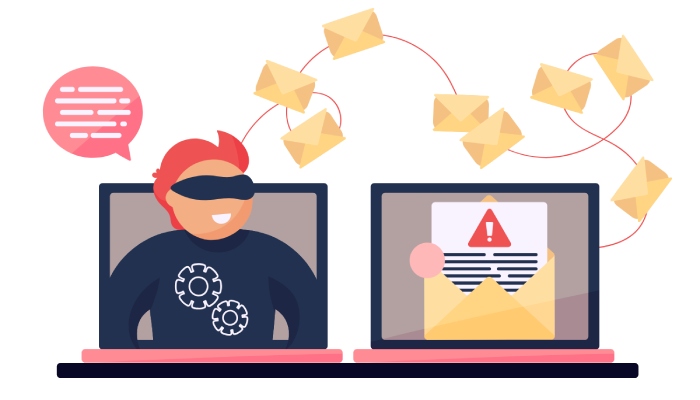
How Spam Checkers Help with Compliance and Authentication Protocols
Spam checkers have become indispensable in ensuring compliance with email authentication standards and regulations such as CAN-SPAM, GDPR, and HIPAA. By integrating tools that perform SPF record checker, DKIM validation, and DMARC analysis, companies can affirm the legitimacy of their email sources, thereby improving email deliverability and avoiding spam folder placement.
Anti-spam software suites like SpamTitan, Vade Secure, and Fortinet FortiMail provide comprehensive spam blacklist lookup capabilities to detect blacklisted IP addresses or domains flagged by global authorities like Spamhaus or Talos Intelligence Group. These solutions also carry out SMTP diagnostics and email header analysis to verify sender authenticity and detect any anomalies that might be indicative of spoofing or phishing attacks.
Moreover, email list hygiene measures supported by platform-specific spam complaint analysis and spam feedback loop monitoring tools (e.g., Google Postmaster Tools and Microsoft Exchange Online Protection) ensure that recipients’ engagement is tracked, bounced emails are handled appropriately, and non-compliant addresses are removed to prevent spam trap detection. These practices collectively safeguard email reputation while adhering to compliance protocols.
Integrating Email Spam Checking into Your Marketing Workflow
Seamless integration of email spam checking into your marketing workflow significantly enhances the effectiveness of bulk email campaigns. Leveraging APIs from services such as MXToolbox, SpamCop, or GFI MailEssentials enables real-time spam score assessment before emails are dispatched. Marketing platforms like Return Path and Cloudmark offer bulk spam tests and advanced spam filter tuning capabilities that allow marketers to preemptively optimize email content and structure.
Incorporating spam folder management strategies with rule-based filtering and content-based filtering techniques helps marketers understand how their content performs across various email clients and anti-spam gateways, including Clearswift and Zscaler Email Security. Furthermore, leveraging machine learning spam filters provided by entities such as Commtouch (now part of Proofpoint) can dynamically adjust spam detection algorithms based on recipient interaction and evolving threat landscapes, including email scam detection and phishing detection.
Spam reporting tools integrated with marketing automation platforms facilitate detailed spam statistics analysis and provide insights into spam complaint trends, bounce handling, and IP reputation management, enabling continuous refinement and higher email deliverability rates.

Future Trends in Email Spam Detection and AI Improvements
The future of email spam detection heavily relies on advancements in artificial intelligence and machine learning, which are revolutionizing how anti-spam software identifies and mitigates malicious email threats. Next-generation spam filters emphasize real-time spam check capabilities enhanced by AI-powered spam detection algorithms that combine Bayesian spam filtering, heuristic spam detection, and complex pattern recognition to detect novel phishing tactics and malware-laden messages.
Leading cybersecurity firms like Trustwave, Sophos Email, and Cyren are investing heavily in developing sophisticated anti-phishing tools and email virus scanners integrated with spam blacklist lookup services managed by Spamhaus and Talos Intelligence Group. Additionally, AI models trained on continuous bulk email analysis can automate spam filter tuning and spam score threshold adjustments to adapt to emerging spamming techniques, reducing false positives and increasing email deliverability.
The integration of cloud-based email security platforms such as Mimecast, Proofpoint, and Barracuda Networks with AI-driven spam trap detection and graylist checking mechanisms further improves the efficacy of content filtering and IP blacklist monitoring. As these technologies converge, organizations can expect improved email security, more precise phishing detection, and enhanced email authentication processes that will redefine email client filtering and anti-spam gateway standards worldwide.
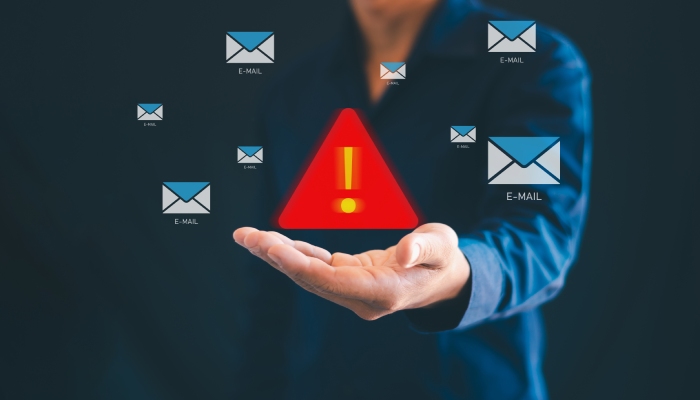
FAQs
What is the role of email authentication in spam detection?
Email authentication, involving SPF record checker, DKIM validation, and DMARC analysis, verifies the sender’s identity and ensures the message is authorized. This process reduces the chance of emails being flagged as spam or phishing attempts by anti-spam gateways and improves overall email deliverability.
How do spam filters use machine learning to identify spam?
Machine learning spam filters, such as those employed by Proofpoint and Commtouch, analyze email content, headers, and sending behavior patterns to detect spam dynamically. These filters adapt over time by learning from new threats via bulk email analysis, improving spam detection accuracy and reducing false positives.
Can personalization reduce the chances of emails landing in the spam folder?
Yes. Personalized emails tend to have better engagement rates and pass spam filters more easily because they differ from generic bulk mail patterns flagged by heuristic spam detection and Bayesian spam filtering algorithms.
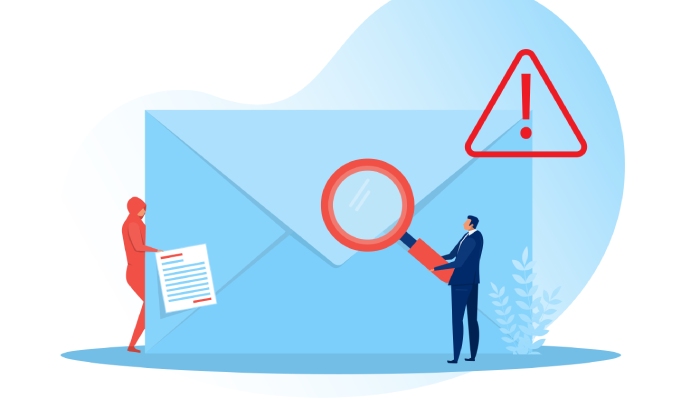
How important is link and image optimization for passing spam filters?
It is crucial. Spam detection algorithms evaluate the safety and reputation of URLs and images. Clean and well-structured links verified through spam blacklist lookup services and optimized images help reduce spam scores and prevent emails from being marked as junk.
What tools assist with spam blacklist checking?
Tools like Spamhaus, MXToolbox, and SpamCop provide essential spam blacklist lookup services to verify if sending IPs or domains have been blacklisted, helping organizations avoid spam traps and maintain a good email reputation.
Key Takeaways
- Personalization significantly lowers spam score and improves email reputation by reducing generic bulk message traits.
- Optimizing links and images with clean URLs and proper formatting enhances email content analysis results and aids in passing spam filters.
- Spam checkers play a vital role in compliance by ensuring SPF, DKIM, and DMARC protocols are met, fostering trust and better deliverability.
- Integration of spam detection tools within marketing workflows facilitates real-time spam scoring, spam filter tuning, and better bounce management.
- AI-powered spam detection algorithms and machine learning spam filters represent the future of email security, improving phishing detection and adapting to evolving threats.

